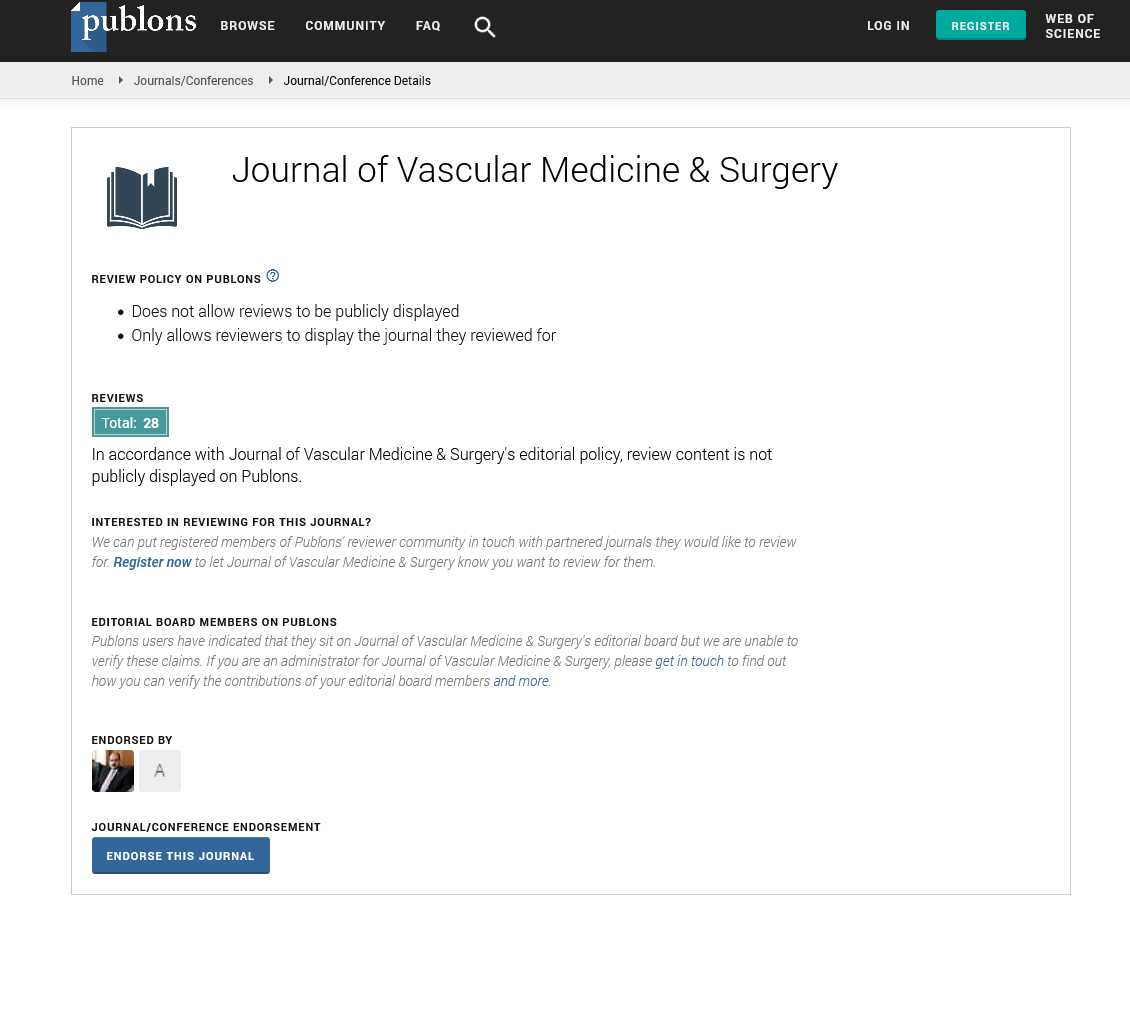Indexed In
- Open J Gate
- Academic Keys
- RefSeek
- Hamdard University
- EBSCO A-Z
- OCLC- WorldCat
- Publons
- Euro Pub
- Google Scholar
- SHERPA ROMEO
Useful Links
Share This Page
Journal Flyer

Open Access Journals
- Agri and Aquaculture
- Biochemistry
- Bioinformatics & Systems Biology
- Business & Management
- Chemistry
- Clinical Sciences
- Engineering
- Food & Nutrition
- General Science
- Genetics & Molecular Biology
- Immunology & Microbiology
- Medical Sciences
- Neuroscience & Psychology
- Nursing & Health Care
- Pharmaceutical Sciences
Perspective - (2024) Volume 12, Issue 6
Global Health Strategies to Reduce the Effects of Myocardial Infarction from Cellular Damage
Matteo Victor*Received: 25-Oct-2024, Manuscript No. JVMS-24-27810; Editor assigned: 29-Oct-2024, Pre QC No. JVMS-24-27810 (PQ); Reviewed: 12-Nov-2024, QC No. JVMS-24-27810; Revised: 19-Nov-2024, Manuscript No. JVMS-24-27810 (R); Published: 26-Nov-2024, DOI: 10.35248/2329-6925.24.12.573
Description
A heart attack, which is also referred to as Myocardial Infarction (MI), continue to be one of the world's major causes of morbidity and death. Worldwide patient outcomes are expected to improve as a result of a higher priority on individualized care and advanced therapeutic techniques. The disruption of blood flow to the myocardium, usually brought on by coronary artery blockage, essentially defines myocardial infarction. The cardiac muscle eventually becomes necrotic as a result of this ischemia. MI is the leading cause of cardiovascular disease-related mortality worldwide and places great pressure on healthcare systems. To minimize its effects, early identification and treatment are essential, as is an understanding of its mechanism. Atherosclerotic plaque rupture and the thrombus that forms as a result are the main factors associated with the pathophysiology of MI. Platelet activation and aggregation are triggered when plaque rupture exposes subendothelial collagen and lipids to circulating blood. Adenosine Diphosphate (ADP), serotonin, and thromboxane A2 all contribute to the production of clots by mediating this process. Ischemia is caused by the resulting blockage, which restricts coronary blood flow. Inflammation, oxidative stress, and endothelial dysfunction are important processes that lead to plaque instability.
MI can also be brought on by non-atherosclerotic factors such dissection, embolism, or coronary artery spasm. In MI, cellular damage occurs in a certain order. Myocardial cells switch to anaerobic metabolism within minutes of ischemia, which causes lactate buildup and ATP depletion. Extended periods of ischemia cause irreparable damage, which leads to necrosis and apoptosis. The length and intensity of ischemia, along with the sufficiency of collateral circulation, determine the level of damage. The primary cause of heart attacks is Coronary Artery Disease (CAD). A strong tightness, or abrupt contraction, of a coronary artery that may stop blood flow to the heart muscle, is a less frequent reason. The majority of heart attacks is characterized by left or center chest pain that either lasts longer than a few minutes or comes and goes. The discomfort can appear as pain, fullness, squeezing, or uncomfortable pressure. Breathlessness frequently occurs in conjunction with chest pain, but it can also occur independently of chest pain.
Cardiopulmonary Resuscitation (CPR) or an electrical shock (defibrillation) may be necessary in certain situations to restart the heart's pumping action after a heart attack. Imaging methods such as echocardiography assess ventricular function and anomalies in wall motion. The most common method for determining coronary artery blockage is still coronary angiography. Computed Tomography Angiography (CTA) and Cardiac Magnetic Resonance imaging (CMR) provide finegrained visualization of coronary morphology and myocardial damage. A heart-healthy diet, weight control, regular exercise, and quitting smoking are all essential components of secondary prevention. Biomarkers and genetic profiling are being utilized more and more to customize treatments, boosting their effectiveness and reducing their side effects. By focusing on certain processes, newly developed drugs such as vorapaxar and cangrelor provide better results in a subset of individuals. By deteriorating over time, these stents reduce the long-term issues that come with conventional metal stents. For anyone recovering from a heart attack, heart failure, or other cardiac condition requiring surgery or medical attention, cardiac rehabilitation is an essential therapy.
Myocardial necrosis brought on by a sudden blockage of a coronary artery is known as an acute myocardial infarction. Symptoms include nausea, diaphoresis, or chest pain, with or without dyspnea. Electrocardiography (ECG) and the existence or lack of biomarkers is used to make the diagnosis. Statins, betablockers, nitrates, antiplatelets, anticoagulants, and reperfusion therapy are used as treatments. Emergency reperfusion for STsegment- elevation myocardial infarction is accomplished through percutaneous intervention, fibrinolytic medications, or, in rare cases, coronary artery bypass graft surgery. Reperfusion for non- ST-segment-elevation myocardial infarction is accomplished through coronary artery bypass graft surgery or percutaneous intervention. While clinical use of stem cell treatment is still in the early stages, it shows potential for cardiac regeneration and repair. Early identification and remote monitoring of at-risk persons are made possible by wearable technology and algorithms powered by Artificial Intelligence (AI). Even with improvements, MI is still a major health issue. Heart failure, arrhythmias, and sudden cardiac death are examples of recurrent events and problems that call for constant research and development. Improving results requires addressing inequalities in care access and increasing public awareness. A thorough approach to diagnosis and treatment is necessary for myocardial infarction, a complex clinical illness. New hope for increased survival and quality of life is provided by developments in specific medicine, interventional procedures, and pharmacology. To reduce the worldwide impact of MI, ongoing research, prevention, and education initiatives are necessary.
Citation: Victor M (2024). Global Health Strategies to Reduce the Effects of Myocardial Infarction from Cellular Damage. J Vasc Surg. 12:573
Copyright: © 2024 Victor M. This is an open-access article distributed under the terms of the Creative Commons Attribution License, which permits unrestricted use, distribution, and reproduction in any medium, provided the original author and source are credited.

